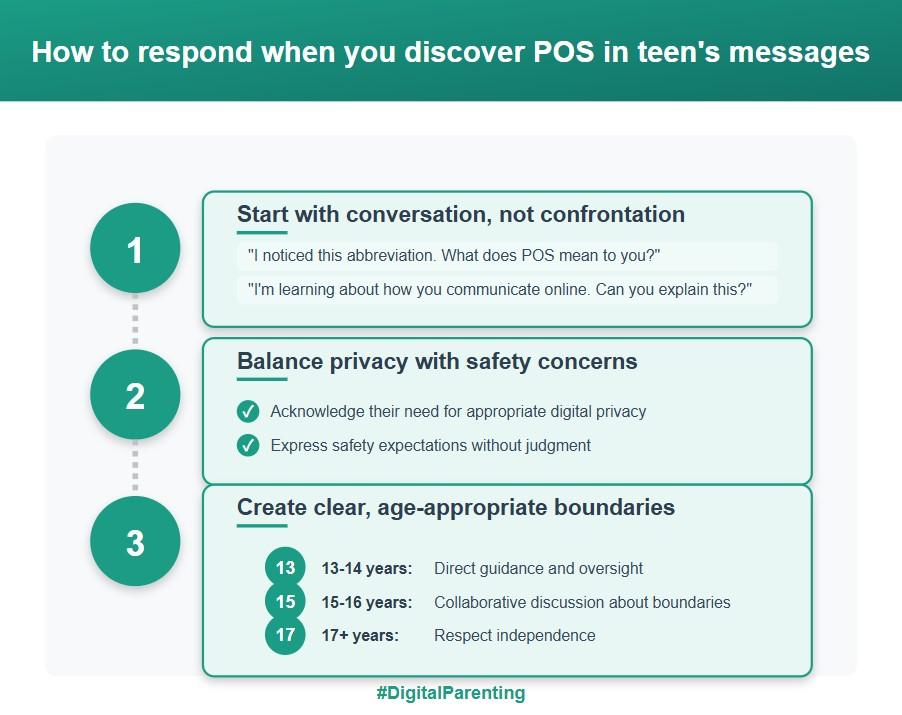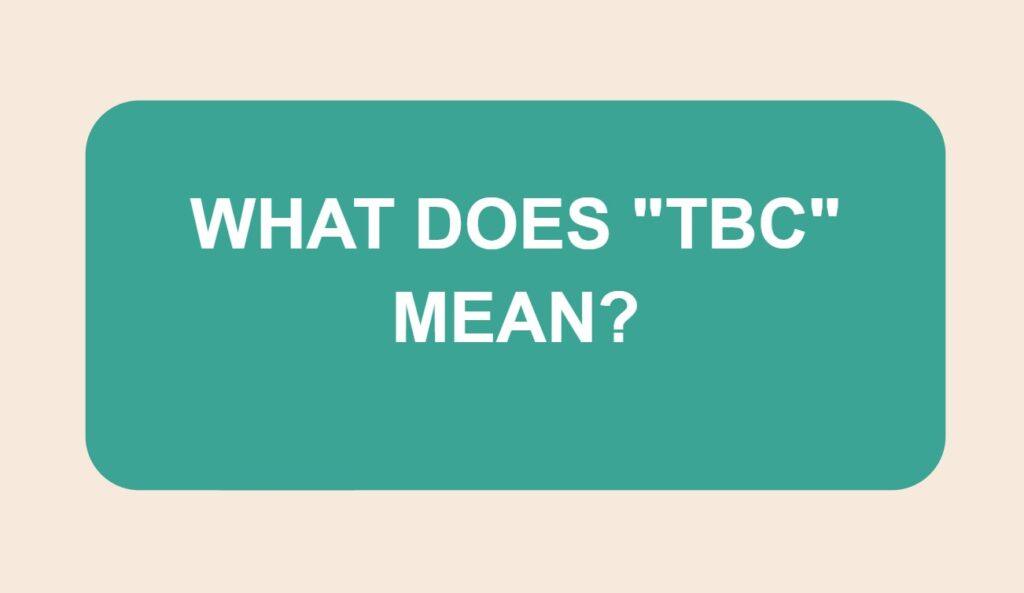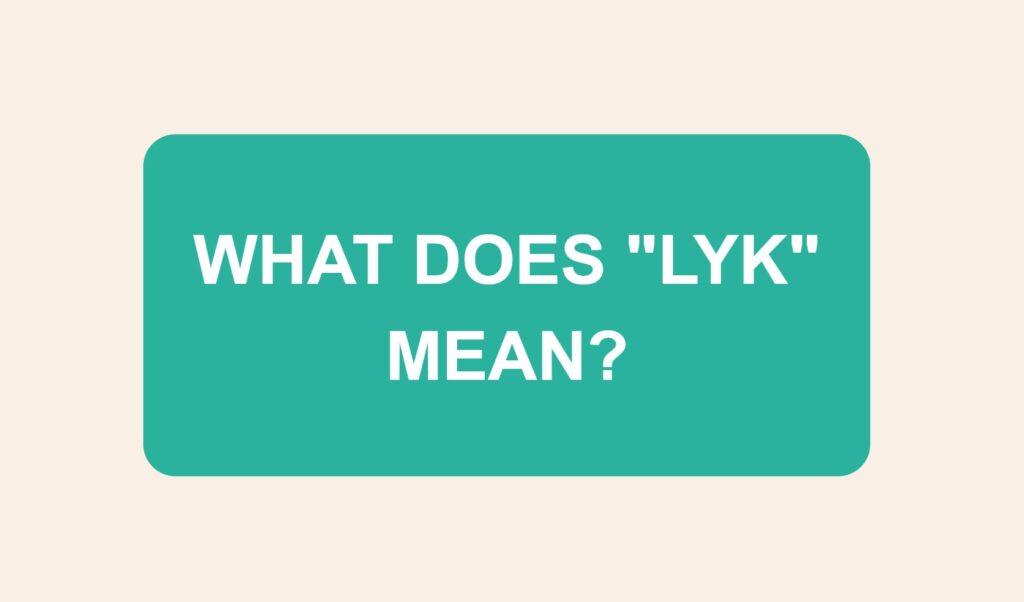Have you ever felt lost trying to decode your teen’s text messages? When you see “POS” pop up, it can feel like a secret code, one that’s crucial to understand if you want to keep up with your child’s digital life. In today’s hyper-connected world, teens communicate in a digital language that evolves faster than most parents can keep up with.
This three-letter acronym appears frequently in text messages, social media, and gaming platforms. Understanding POS slang and its various meanings is crucial for any parent navigating the complex landscape of teen digital communication, helping bridge the gap between generations in our increasingly digital world.
What Does POS Mean in Texting? Breaking Down All Meanings
The term “POS” has multiple interpretations in digital communication, with significant variations depending on context. Let’s decode what POS slang actually means across different scenarios.

Primary Teen Usage: “Parent Over Shoulder”
When it comes to teen texting slang, “POS” most commonly stands for “Parent Over Shoulder.” This digital warning signal alerts friends that an adult is nearby and potentially monitoring the conversation. It functions as an instant code that the conversation should pivot to more parent-appropriate topics.
Typical POS slang examples in this context include:
- “Can’t talk about the party now, POS”
- “POS, will send those pics later”
- “gotta act normal, POS”
This POS meaning in texting is particularly prevalent in instant messaging, social media DMs, and gaming chats where teens might be discussing topics they prefer to keep private from parental oversight.
Secondary Meaning: The Less Polite Interpretation
“POS” can alternatively function as a derogatory abbreviation for “Piece of Sh*t.” Teens might use this POS slang meaning when expressing frustration or contempt toward someone or something.
For instance:
- “My phone is such a POS, it keeps freezing”
- “That POS canceled on me again”
- “The wifi at school is a complete POS”
Other POS Meanings You Might Encounter
While less common in typical teen conversations, POS can occasionally refer to:
- Point of Sale (in retail discussions)
- Positive (in medical contexts)
- /POS meaning in Discord (indicating a roleplay “positive” response)
- Position (in gaming strategic conversations)
However, when scanning your teen’s digital communication, the “Parent Over Shoulder” interpretation should be your primary concern.
How Teens Actually Use POS Slang in Conversations
Understanding what POS means in texting requires seeing it in an authentic conversational context. Here’s how this slang typically appears in various digital platforms:
Text Message Example:
Friend: "You coming to Emma's Friday? Her parents are away till Sunday 😏"
Teen: "Sounds good but POS, will call you later"
Friend: "Got it, talk when you're free"Snapchat Conversation:
Friend: "Check out what Tyler posted about Mr. Williams lol"
Teen: "POS can't look now"
Friend: "It'll probably get deleted soon, check ASAP"Discord Chat:
Friend: "Join the private server, we're doing that thing we talked about"
Teen: "POS, logging off for now, back in 30"
Friend: "Understood, we'll save your spot"Each example demonstrates how teens use POS slang to signal restricted communication. Recognizing these patterns helps parents interpret digital conversations more accurately and identify potential areas of concern.
Why “POS” in Your Teen’s Messages Should Be on Your Radar
The presence of “POS slang” in your teen’s digital communication isn’t automatically problematic, but it does warrant attention. Here’s why understanding what POS means in texting matters for digital parents:
Privacy Concerns and Hidden Conversations
When teens use “POS,” they’re explicitly signaling their desire to hide certain conversations from parental view. While adolescent privacy-seeking is developmentally normal, consistent use of POS slang may indicate conversations about activities or topics that conflict with family values or safety.
Potential Warning Signs to Monitor
The frequent appearance of this texting code might suggest your teen regularly engages in conversations they don’t want discovered. These hidden discussions could range from innocent topics to more concerning subjects like:
- Parties with minimal supervision
- Sharing or requesting inappropriate content
- Arranging meetups with online contacts
- Discussing rule-breaking or risky behavior
According to digital safety experts, acronyms like POS often appear alongside other secretive communication patterns. The National Online Safety Council reports that 78% of teens use some form of coded language to maintain privacy from parents.
The Broader Context of Digital Safety
Understanding what POS means in texting connects to wider digital well-being concerns. When teens consistently work to conceal their online interactions, parents lose valuable visibility into potential digital risks including cyberbullying, online predators, and exposure to inappropriate content.
What to Do When You Find “POS” in Messages
Discovering your teen using POS slang requires a thoughtful approach that balances respect for developing autonomy with appropriate parental guidance:

Initiate Conversation, Not Confrontation
Rather than immediately confronting your teen, approach the topic with genuine curiosity:
- “I noticed this abbreviation in some messages. What does POS mean in texting among your friends?”
- “I’m trying to better understand how you communicate online. Can you tell me about some of the shorthand you use?”
Build Digital Trust Through Understanding
Your response to discovering POS slang can either strengthen or damage your digital relationship:
- Acknowledge their developmental need for some privacy
- Express your safety concerns without judgment
- Clearly communicate your family’s digital values
- Create space for their perspective on appropriate privacy
Age-Appropriate Digital Communication Guidelines
Tailor your approach based on your teen’s maturity level:
- Young Teens (13-14): More direct guidance about appropriate online communication boundaries
- Mid-Teens (15-16): Collaborative discussion about digital privacy expectations
- Older Teens (17+): Respect their increasing independence while maintaining open communication channels
Establishing Clear Digital Boundaries
Work together to create reasonable technology boundaries:
- Develop a family technology agreement
- Clarify which topics require parental awareness
- Distinguish between healthy privacy and concerning secrecy
- Create consequences that focus on rebuilding trust rather than punishment
Digital Safety Approaches: Finding Your Family’s Perfect Balance
| Approach | Key Benefits | Potential Drawbacks | Ideal Scenarios |
|---|---|---|---|
| Communication-First | Builds lasting trust; Develops self-regulation; Encourages honesty | Limited visibility into actual online activity; Depends on teen’s willingness to share | Families with established trust; Older teens; Foundation for any approach |
| Digital Education | Empowers through knowledge; Addresses underlying safety concerns; Builds critical thinking | May not address immediate risks; Takes time to show results | All age groups; Prevention-focused families |
| Transparent Monitoring | Provides necessary oversight; Creates accountability; Offers concrete evidence when needed | Can trigger resistance if implemented poorly; May initially strain trust | Younger teens; Situations with specific concerns; High-risk scenarios |
| Restrictive Controls | Maximum protection; Clear and firm boundaries | Often generates rebellion or workarounds; Doesn’t teach digital discernment | Limited visibility into actual online activity; Depends on the teen’s willingness to share |
Digital parenting experts recommend a balanced approach that emphasizes open communication while implementing appropriate monitoring based on your teen’s specific needs and your family’s unique dynamics.
Practical Digital Parenting: Beyond Understanding POS Slang
Digital Literacy Development
Ensure both you and your teen understand:
- The permanent nature of digital communication
- How information propagates across platforms
- Potential long-term consequences of inappropriate sharing
- Essential privacy and security practices
As digital safety expert Dr. Linda Patel notes, “Parents who understand what POS means in texting and similar codes are better positioned to have meaningful conversations about digital citizenship.”
Creating Effective Technology Agreements
Establish clear, collaborative guidelines:
- Device usage boundaries (times, locations, contexts)
- Balanced expectations about privacy and oversight
- Transparent consequences for broken digital trust
- Regular check-ins about online experiences and challenges
Fostering Open Digital Communication
Create an environment where teens feel comfortable discussing online experiences:
- Regular, judgment-free conversations about digital life
- Share your own technology challenges and mistakes
- Respond constructively when they report problems
- Reward honesty, especially when difficult topics arise
Balancing Monitoring and Trust-Building
Effective digital parenting requires a multi-faceted approach:
- Open discussions about online safety expectations
- Education about potential digital risks
- Strategic monitoring tailored to your child’s maturity level
- Progressive digital independence as teens demonstrate responsibility
Frequently Asked Questions
Conclusion
Recognizing what POS means in texting provides valuable insight into your teen’s digital world. The most effective digital parenting strategy combines:
- Consistent communication is your primary digital parenting tool
- Ongoing education about evolving online risks and responsible digital citizenship
- Thoughtful monitoring calibrated to your teen’s specific needs and maturity level
- Progressive independence as teens demonstrates digital responsibility
When you discover terms like “POS” in messages, view it as an opportunity to evaluate your family’s digital communication dynamics. Rather than reacting with alarm, use this knowledge to strengthen your relationship and refine your digital parenting approach.
With the right balance of trust, education, and appropriate oversight, you can help your teen develop into a responsible digital citizen while keeping them safe from potential online harms.
John is a tech enthusiast and digital safety advocate with over 7 years of experience reviewing monitoring apps and parental control tools. He specializes in testing real-world app performance, privacy standards, and user experience. His mission is to help parents and employers choose trustworthy solutions for safer digital environments.

